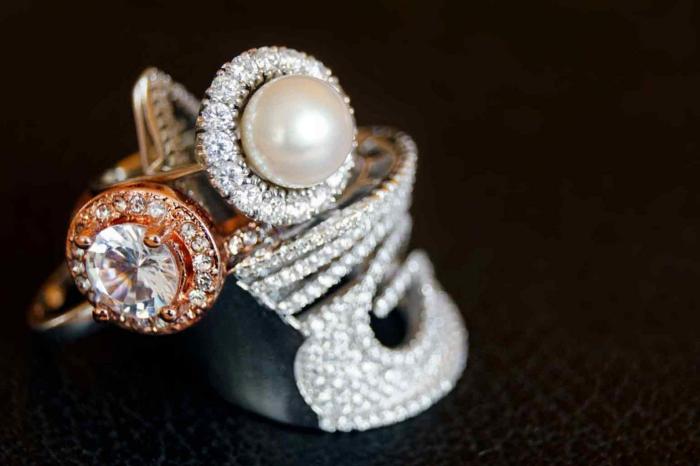White metal is a term often used in the jewelry industry. It refers to a variety of metals that have a shiny, white appearance. Many people are drawn to white metal for its elegance and versatility. This article will explore what white metal is in jewelry, its common types, uses in jewelry, and tips for care.
What is White Metal?
White metal refers to a range of metals that have a silvery or white color. It can include both precious and non-precious metals. The term does not refer to a specific type of metal. Instead, it encompasses various alloys and materials used in jewelry making.
White metals are popular for their modern look. They complement many gemstones and styles. Their neutral color makes them suitable for both casual and formal wear.
Common Types of White Metals
Several metals fall under the category of white metal. Here are some of the most common types:
1. Silver
Silver is one of the most widely used white metals in jewelry. It is a precious metal known for its luster and malleability.
Sterling Silver: This is the most common form of silver used in jewelry. It contains 92.5% silver and 7.5% other metals, usually copper. This alloy increases strength while maintaining a beautiful shine.
Argentium Silver: A modern alternative to sterling, Argentium contains a higher percentage of pure silver and is mixed with germanium. This makes it more tarnish-resistant.
2. White Gold
White gold is an alloy of gold mixed with other metals. These metals often include palladium, nickel, or silver.
Karat Variations: White gold comes in various karat ratings, such as 10k, 14k, and 18k. The higher the karat, the more gold is present in the alloy.
Rhodium Plating: Many white gold pieces are plated with rhodium. This gives them a bright, shiny finish and enhances their durability.
3. Platinum
Platinum is a rare and precious metal. It is denser and heavier than gold and silver.
Durability: Platinum is known for its strength and resistance to tarnishing. It is an excellent choice for high-end jewelry, especially engagement rings.
Hypoallergenic: Platinum is a hypoallergenic metal, making it ideal for individuals with sensitive skin.
4. Palladium
Palladium is another member of the platinum group. It has a similar appearance and many of the same properties.
Lightweight: Palladium is lighter than platinum but still strong and durable.
Natural White Color: Unlike white gold, palladium does not require plating to achieve its white color.
Uses of White Metal in Jewelry
White metals are versatile and can be used in various types of jewelry. Here are some common applications:
Rings
White metal is often used in rings, including engagement and wedding bands. Its modern look appeals to many couples. White gold and platinum are popular choices for these significant pieces.
Necklaces and Pendants
White metal necklaces and pendants can be simple or ornate. They can feature gemstones or be designed as intricate pieces of art. Their neutral color complements a variety of stones.
Earrings
White metal earrings come in many styles. From studs to hoops, they suit any occasion. Many people prefer white metals for their ability to blend with any outfit.
Bracelets
White metal bracelets can be delicate or chunky. They can be worn alone or stacked with other bracelets. Their versatility makes them a favorite among jewelry lovers.
Advantages of White Metal Jewelry
Choosing white metal for jewelry has several advantages. Here are some of the key benefits:
Timeless Appeal
White metals have a classic and timeless look. They can easily transition from casual to formal wear. This makes them a staple in any jewelry collection.
Versatility
White metals pair well with various gemstones and materials. They can enhance the color of stones and complement different styles.
Durability
Many white metals are strong and durable. This makes them suitable for everyday wear. They can withstand the rigors of daily life while still looking beautiful.
Disadvantages of White Metal Jewelry
While white metal has many benefits, it also has some drawbacks. Here are a few to consider:
Tarnishing
Some white metals, like silver, can tarnish over time. This requires regular cleaning to maintain their shine.
Allergic Reactions
Certain alloys, like those containing nickel, can cause allergic reactions in some individuals. If you have sensitive skin, choose hypoallergenic options like platinum or palladium.
Cost
Precious white metals, such as platinum, can be expensive. This may limit options for some consumers.
Caring for White Metal Jewelry
Proper care can prolong the life of your white metal jewelry. Here are some tips for keeping your pieces in great condition:
Regular Cleaning
Clean your white metal jewelry regularly. Use a soft cloth to wipe away dirt and oils. For deeper cleaning, use warm soapy water and a soft brush. Avoid harsh chemicals, as they can damage the metal.
Storage
Store your jewelry in a cool, dry place. Keep each piece in its own pouch or box to prevent scratches.
Avoiding Exposure
Remove your jewelry before engaging in activities that may cause damage. This includes swimming, exercising, or using harsh chemicals.
See also: What Is 18 Carat White Gold
Conclusion
White metal is a popular choice in the jewelry industry. Its range of options, including silver, white gold, platinum, and palladium, offers something for everyone. Whether you prefer a classic look or a modern design, white metal can meet your needs.
Understanding the characteristics, uses, and care of white metal can help you make informed choices. Consider your personal style, budget, and lifestyle when selecting white metal jewelry.
With proper care, white metal jewelry can last for many years. Its beauty and versatility make it a valuable addition to any jewelry collection. Embrace the elegance of white metal, and enjoy wearing your stunning pieces for years to come.
Related topics:

